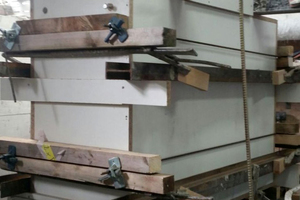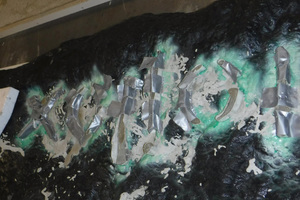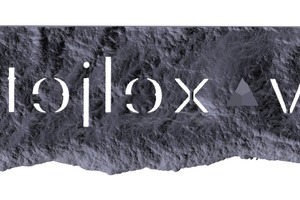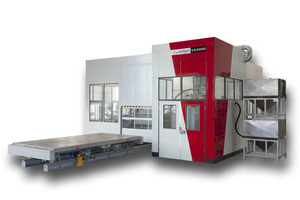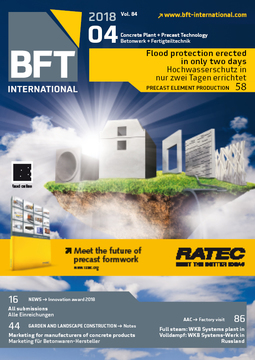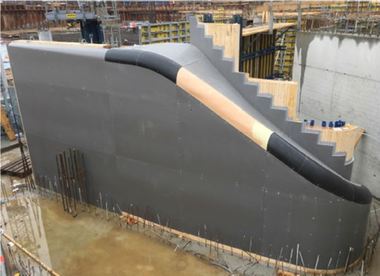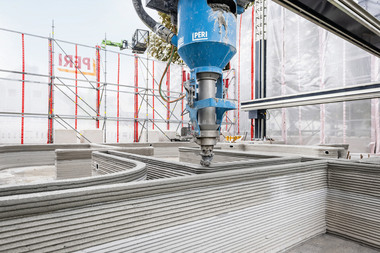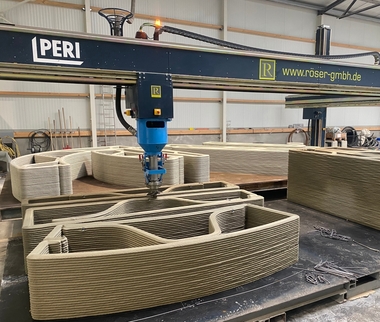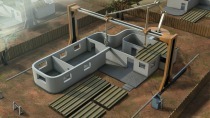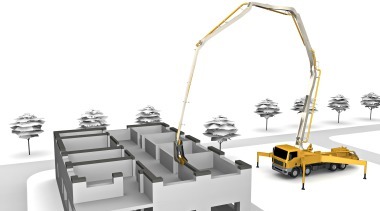Industrial 3D printing with high-tech concrete
Every day, 3D printing as additive manufacturing process conquers new fields of application in the most diverse industries. Until now, metal foundries have been the prime users of the processes offered by Voxeljet, one of the leading suppliers of 3D printing systems designed for industrial application.
This is because 3D printing enables the manufacture of highly complex forms and cores of sand with great precision and within the shortest time. Users can save complete process steps – for example, the construction of expensive forming tools – since all that is needed is a CAD file for the manufacture of 3D-printed sand forms and cores. The service center of Voxeljet manufactures these forms on an on-demand basis.
Concrete casting with 3D printing
Illustrated by the company stone made of concrete, Voxeljet now demonstrates new fields of applications of 3D printing technology in architecture and the construction industry. Concrete, the same as metal, can also be cast into sand-printed molds. Printed sand molds, depending on their complexity, can be used both for reusable and for permanent formwork. The advantage of 3D printing lies in cost-optimized manufacturing without tools.
Voxeljet sees future areas of application for concrete casting in architecture and in the construction industry. Façades, elements of interior design, and even furniture are easily realized with 3D printing systems – as are objects of art and design. Experts at Voxeljet, in collaboration with Dade-Design.com, a leading specialist in high-end concrete design and mold construction, have succeeded in manufacturing the company stone on the first attempt and without problem.
From CAD file to the complete object
The process begins with CAD design. To be able to fully exploit the advantages of 3D printing, Voxeljet decided on the use of hybrid formwork, a combination of printed and conventional form elements. Here, the 3D printed elements were restricted to the complex part: the front face of the company stone. Simple geometrical shapes – the plane surfaces, for example – were formed with conventional wooden formwork.
The complex part of the Voxeljet company stone consists primarily of the structure of the stone with the integrated logo, which projects from the background structure. “Owing to the freedom of design that 3D printing affords, even highly complex geometrical shapes with undercuts and intended irregularities can be realized without difficulty. In casting the company stone by this process, we were able to manufacture a geometry which could simply not have been possible to achieve with conventional techniques,” says Tobias King, Director Applications at Voxeljet.
For the printing process, the completed file was loaded into a 3D printing system. The 3D printing system then manufactured the formwork in a single workstep. Voxeljet printed the formwork for the company stone onto a VX4000, the largest industrial 3D printing system, with a continuous working area of 4 x 2 x 1 m (L x W x H), in just one night.
The VX4000 applies layers of sand of only around 300 µm thickness to the construction surface. A print head then selectively glues the layers together with a binder. Once the mold is completely printed, Voxeljet specialists remove the sand that was not used and clean the mold with compressed air. To prepare the mold for the casting process, 3D print specialists infiltrate the mold with a PU dispersion, in order to close the pores and, at the same time, seal the mold surface.
Self-compacting UHPC used
Voxeljet then sent the surface-finished mold to the specialists at Dade-Design.com in Switzerland for casting the concrete. To facilitate subsequent removal of the sand mold, Dade-Desing.com applied a release agent to the mold.
Once the printed logo has hardened, Dade-Design, in a second step, cast the remaining company stone with self-compacting UHPC. After around 20 hours, the concrete had completely hardened.
After unproblematic removal of the formwork, the Voxeljet company stone was as good as finished. In the final step, the stone was polished to give it the finishing touch. The result of the first concrete casting is quite impressive to behold. “Something that was inconceivable in architecture until just a few years ago, is now possible as a combination of 3D printing and our in-house developed UHPC,” adds concrete casting specialist Keel. The stone, complete with the company logo, now adorns the Voxeljet administration building in Friedberg.


